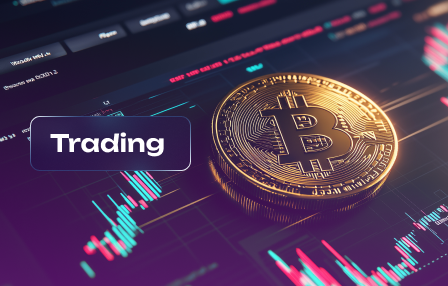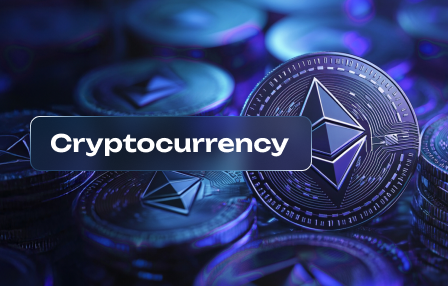The Role of OTC Trading in the Global Financial System
March 17, 2025
Embrace the necessity for market participants to adapt their strategies. The rise of decentralized platforms has transformed liquidity flows, presenting both opportunities and challenges. Understanding the nuances of this evolution is essential for anyone engaged in modern investment practices.
Regulation plays a pivotal role in shaping these emerging structures. As authorities strive to maintain order amidst the complexity of these environments, compliance becomes non-negotiable for all actors involved. A thorough grasp of current and forthcoming regulatory frameworks will enable participants to thrive while mitigating risks associated with non-compliance.
In this interconnected system, heightened liquidity can either enhance or destabilize markets. Stakeholders must recognize the implications of increased trading volumes and their potential to influence price stability. An informed approach is crucial; leveraging data analytics will provide insights into market behavior and investor sentiment, allowing for more strategic decision-making.
Ultimately, adapting to these shifts requires an open mindset and proactive engagement with the evolving landscape. By staying informed and agile, you position yourself advantageously within this intricate web of global finance.
Market Liquidity Changes
Enhance your strategy by recognizing how participant behavior shapes liquidity in over-the-counter transactions. Increased activity among institutional players can lead to deeper markets, yet it may also introduce volatility during significant price movements.
Regulatory frameworks are pivotal in establishing trust and stability. Stricter guidelines can restrict liquidity by limiting participant access but can simultaneously enhance market integrity. Market participants should stay ahead by adapting to these evolving compliance standards.
The interconnectedness of systems globally means that shifts in one region can ripple through others. Monitoring international trends is essential for anticipating liquidity fluctuations. Understanding the dynamics of diverse trading environments allows for better positioning and risk management.
Liquidity varies across asset classes; therefore, a tailored approach to different instruments is necessary. High-volume securities often exhibit more stable liquidity compared to niche assets, which can suffer from wide spreads and sporadic trading activity. Participants must assess their portfolios regularly to ensure optimal allocation.
Technological advancements are reshaping how transactions occur, driving efficiency and accessibility. Leveraging algorithms and automated trading can improve execution speed, yet reliance on technology carries its own risks, including system failures or flash crashes that can disrupt liquidity.
Lastly, engaging with a network of diverse participants enables sharing insights and strategies that bolster market presence. Collaborating fosters resilience against market disruptions while enhancing overall trade execution quality. Building relationships across the trading ecosystem is key to sustaining liquidity in this complex environment.
Price Discovery Mechanisms
Implement robust systems to enhance price discovery within decentralized frameworks. Accurate pricing hinges on the interaction among varied participants in the trading arena, where transparency is paramount. Enhanced visibility into order flows can mitigate information asymmetry, allowing for more accurate valuations.
Utilize advanced algorithms that analyze historical data and real-time transactions. These tools can identify trends, volatility patterns, and establish benchmarks that reflect true market conditions. Participants should leverage data analytics to gain insights into supply and demand dynamics, enabling informed decision-making.
Regulatory frameworks play a crucial role in shaping pricing mechanisms. Active engagement with regulators ensures the establishment of guidelines that promote fairness and reduce manipulation risks. A structured regulatory environment not only builds trust among participants but also enhances overall market integrity.
Foster collaborations among trading entities to improve liquidity pools. Liquidity directly influences price stability; therefore, creating partnerships can help consolidate resources and narrow bid-ask spreads. This approach encourages competitive pricing, benefitting all stakeholders involved.
Adopt innovative technologies such as blockchain to enhance traceability in transactions. Immutable records facilitate confidence in pricing accuracy, deterring fraudulent activities. By integrating these technologies, the system becomes more resilient against disruptions, ensuring continuous and reliable price formation.
Encourage participation from diverse investor groups to broaden perspectives on value assessments. Diverse opinions contribute to a more comprehensive view of an asset’s worth, enriching the price discovery process. Engaging institutional players alongside retail investors can lead to a balanced market perspective.
Regulatory Challenges Faced
Strengthening oversight in decentralized markets requires a multi-faceted approach. Participants in these systems often operate outside traditional regulatory frameworks, leading to significant hurdles for authorities aiming to maintain market integrity and investor protection.
The lack of standardized reporting practices complicates transparency. Regulators must push for greater disclosure from entities operating in less regulated environments. Implementing harmonized reporting requirements can enhance data accessibility, aiding in real-time monitoring of transactions.
Enforcement poses another challenge. The borderless nature of these transactions makes jurisdictional enforcement difficult. Collaborative international frameworks are essential for addressing cross-border compliance issues and ensuring that market participants adhere to established rules.
Additionally, the complexity of financial products traded in these arenas raises concerns about investor understanding and risk exposure. Regulators should prioritize educational initiatives aimed at enhancing participant literacy regarding the instruments being used and the inherent risks involved.
Finally, adapting regulation to keep pace with technological advancements is critical. Regulatory bodies must remain agile, continuously reassessing rules to meet evolving market dynamics while fostering innovation without compromising safety and soundness in the system.
Counterparty Risk Considerations
Evaluate counterparty risk by implementing robust due diligence processes. Assess the creditworthiness of participants to mitigate exposure in less regulated environments. Leverage quantitative models to gauge potential defaults and systemic shocks.
Transparency is key. Utilize centralized clearinghouses where feasible, as they provide an additional layer of security and enhance overall market stability. This can lead to improved liquidity, as participants feel more confident engaging in transactions.
Monitor liquidity conditions closely. Illiquid assets often carry heightened risks due to larger price swings and difficulty in unwinding positions. Establish risk limits that reflect the liquidity profile of instruments involved.
Diversification is a powerful tool. Spread exposure across multiple counterparties to minimize the impact of a single entity’s failure. Regularly review counterparty relationships, adjusting strategies based on evolving market conditions and regulatory requirements.
Stay informed about regulatory changes. New rules can alter the landscape significantly, affecting how participants manage risks. Engaging with industry groups can provide insights into best practices and upcoming regulatory shifts.
Finally, cultivate a culture of risk awareness among team members. Regular training sessions on assessing counterparty risk can enhance decision-making processes and reinforce the importance of rigorous assessments in maintaining systemic integrity.
Technological Innovations Influence
Adopt advanced algorithms and machine learning tools for optimizing liquidity and enhancing order execution. These technologies facilitate seamless interactions among participants, allowing for quicker responses to market changes.
- Blockchain Technology: Implementing decentralized ledgers improves transparency and reduces settlement times, which mitigates risks associated with counterparty interactions.
- AI-Powered Analytics: Utilize artificial intelligence for predictive analytics that assist in price forecasting and identifying trading patterns, enabling better strategic decisions.
- Automated Trading Systems: Leverage automated systems to manage trades efficiently, ensuring optimal timing and reducing human error in volatile conditions.
Consider integrating mobile applications to enhance accessibility for participants. This shift increases engagement and allows real-time decision-making from anywhere in the world.
- Invest in cybersecurity measures to protect sensitive data within trading systems.
- Ensure compliance with evolving regulations through the use of compliance management software.
- Facilitate real-time communication channels among market participants to enhance collaboration and share insights rapidly.
Monitor emerging technologies such as quantum computing, which could redefine risk assessment models and create unprecedented efficiencies in transaction processing.
Emphasize ongoing education for market participants regarding technological advancements. Staying informed can lead to better adaptation strategies amidst rapid changes in the trading ecosystem.



